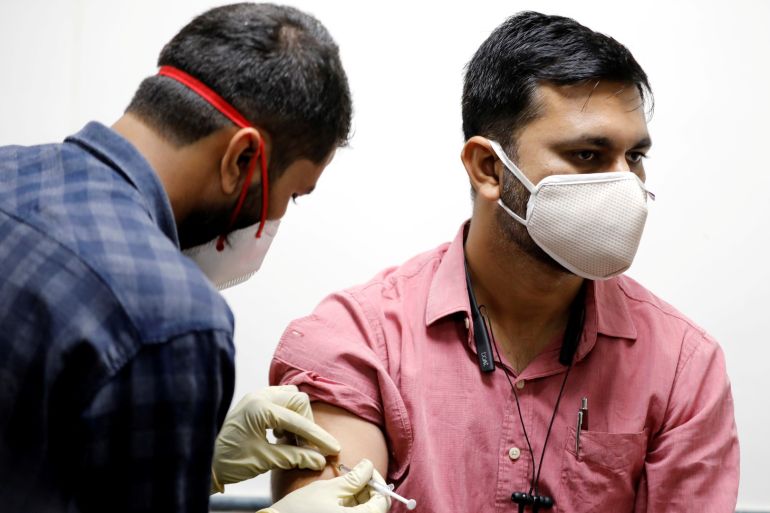COVAX sets out plan for global distribution of 337m vaccines
Countries will receive doses in proportion to population size, with the most going to India.

The COVAX initiative for equitable global access to COVID-19 vaccines has published its first distribution list, planning enough doses for dozens of countries to immunise more than 3 percent of their populations by mid-year.
The release of the “interim distribution forecast” on Wednesday came amid concerns over whether lower-income countries will be left out of the immunisation race dominated by rich nations – a problem COVAX, which is led by the United Nations-backed vaccine alliance Gavi, the Coalition for Epidemic Preparedness Innovations (CEPI) and the World Health Organization (WHO), was set up to resolve.
Keep reading
list of 4 itemsBiden administration to provide COVID-19 vaccines to pharmacies
COVID: Poland decides against giving elderly AstraZeneca vaccine
Oxford-AstraZeneca vaccine cuts COVID transmission: Study
The list broke down for the first time how the programme’s initial 337.2 million doses will be distributed, in line with a target “to protect the most vulnerable groups such as health care workers” in the first half of the year.
First deliveries are expected in late February, with some 145 countries set to receive enough doses to immunise 3.3 percent of their population by mid-2021.
.@CEPIvaccines, @gavi & WHO, as co-leads of the #COVAX initiative for equitable 🌍 access to #COVID19 vaccines, alongside key delivery partner @UNICEF, are pleased to publish COVAX’s 1st interim distribution forecast: https://t.co/RybRS5Fbuy #VaccinEquitypic.twitter.com/lrk6SNWnkq
— World Health Organization (WHO) (@WHO) February 3, 2021
Countries will receive doses in proportion to population size, with the most going to India (97.2 million), Pakistan (17.2 million), Nigeria (16 million), Indonesia (13.7 million), Bangladesh (12.8 million) and Brazil (10.6 million).
Wealthy self-financing countries were on the list in addition to lower-income nations, including South Korea (2.6 million doses), Canada (1.9 million) and New Zealand (250,000).
The distribution list includes 240 million doses of the AstraZeneca-Oxford vaccine, licensed to the Serum Institute of India (SII); 96 million doses of AstraZeneca-Oxford vaccine; and 1.2 million doses of the Pfizer-BioNTech vaccine.
The Pfizer-BioNTech vaccine is the only one so far to have received emergency use approval from the World Health Organization (WHO). Evaluation is under way for the AstraZeneca-Oxford vaccine. Both require two injected doses.
A statement stressed the list is non-binding and may change, but would allow countries to plan for how many doses they will receive in the first rounds.
“This is fantastic. We can start vaccinating. It is coming in the next weeks,” Ann Lindstrand, coordinator for WHO’s immunisation programme, told a news conference.
Frederik Kristensen, deputy CEO for the Coalition for Epidemic Preparedness Innovation (CEPI), a co-leader of the programme, said the plans came at a “critical moment” in the fight against the coronavirus as new variants emerged and a lopsided vaccine roll-out so far – favouring rich countries.
“We are on a path to really start balancing out a global map, which so far has shown how many lower-income countries are yet to start vaccinating a single person, while other, wealthier countries go ahead towards mass vaccination,” he said.
Longer term, COVAX aims to secure enough vaccines for at least the most vulnerable 20 percent in participating countries by the end of 2021.
Its funding is covered through donations for the 92 lower- and lower-middle-income economies involved, while for richer countries, buying in operates as a back-up insurance policy for their own vaccination programmes.
But the mechanism has faced challenges as rich countries scoop up vaccine supplies, sometimes at premium prices, and undercut the WHO’s goal of equitable vaccine distribution.
Programme leaders have faced issues trying to strike deals with pharmaceutical manufacturers, and only a fraction of the two billion doses that have been secured for COVAX involve firm deals.